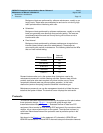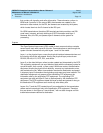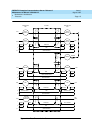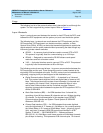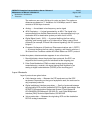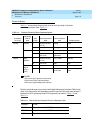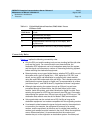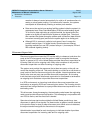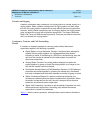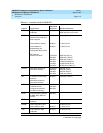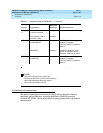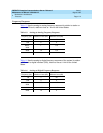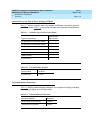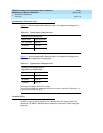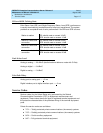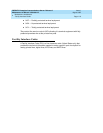
DEFINITY Enterprise Communications Server Release 6
Maintenance for R6vs/si
555-230-127
Issue 1
August 1997
Maintenance Architecture
Page 1-11Protocols
1
Transfer on Ringing
A station or attendant may conference in a ringing station or transfer a party to a
ringing station. When a station conferences in a ringing station and then drops
the call, the ringing station is treated like a party without disconnect supervision.
However, when a station transfers a party to a ringing station, the ringing station
party is treated like a party with disconnect supervision. Two timers (Attendant
Return Call Timer and Wait Answer Supervision Timer) are provided to ensure the
call is not locked to a ringing station.
Conference, Transfer, and Call-Forwarding
Denial
If a station or attendant attempts to connect parties without disconnect
supervision together, the following is possible:
■
Digital Station or Local Attendant Transfer
: if a digital station attempts to
transfer the two parties together, the call appearance lamp flutters,
indicating a denial. If transferring to a DCS trunk, the denial may drop the
call since the transfer is allowed and the other system is queried for
disconnect supervision.
■
Analog Station Transfer
: if an analog station attempts to transfer two
parties together by going on-hook, the analog station is no longer on the
call and the transfer cannot be denied.
■
Centralized Attendant Service (CAS) Attendant Transfer
: if a CAS attempts
to transfer two parties together by pressing the release key, the release
link trunk is released and the branch attempts a transfer by going on-hook
■
Station Conference/Dropout
: if a station conferences all parties, the
conference is allowed since the station has disconnect supervision. When
the station is dropped from the call, the call is dropped since the other
parties do not have disconnect supervision.
■
Station Call Forwarding
: if a station is call forwarded off-premise to a trunk
without disconnect supervision, the calling party without disconnect
supervision is routed to the attendant
Table 1-4
lists the various protocols, with applications and maximum limitations.



